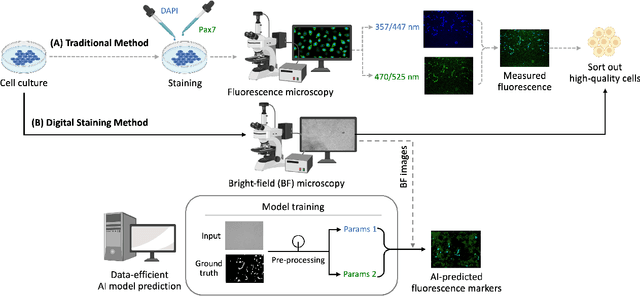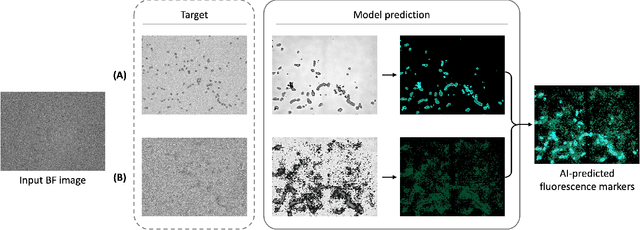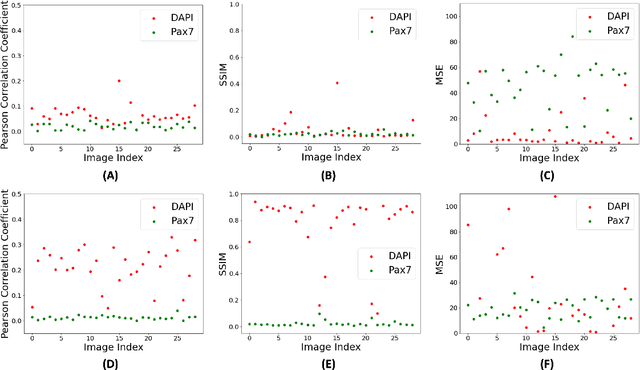Won Seob Kim
Label-free prediction of fluorescence markers in bovine satellite cells using deep learning
Oct 17, 2024



Abstract:Assessing the quality of bovine satellite cells (BSCs) is essential for the cultivated meat industry, which aims to address global food sustainability challenges. This study aims to develop a label-free method for predicting fluorescence markers in isolated BSCs using deep learning. We employed a U-Net-based CNN model to predict multiple fluorescence signals from a single bright-field microscopy image of cell culture. Two key biomarkers, DAPI and Pax7, were used to determine the abundance and quality of BSCs. The image pre-processing pipeline included fluorescence denoising to improve prediction performance and consistency. A total of 48 biological replicates were used, with statistical performance metrics such as Pearson correlation coefficient and SSIM employed for model evaluation. The model exhibited better performance with DAPI predictions due to uniform staining. Pax7 predictions were more variable, reflecting biological heterogeneity. Enhanced visualization techniques, including color mapping and image overlay, improved the interpretability of the predictions by providing better contextual and perceptual information. The findings highlight the importance of data pre-processing and demonstrate the potential of deep learning to advance non-invasive, label-free assessment techniques in the cultivated meat industry, paving the way for reliable and actionable AI-driven evaluations.
 Add to Chrome
Add to Chrome Add to Firefox
Add to Firefox Add to Edge
Add to Edge